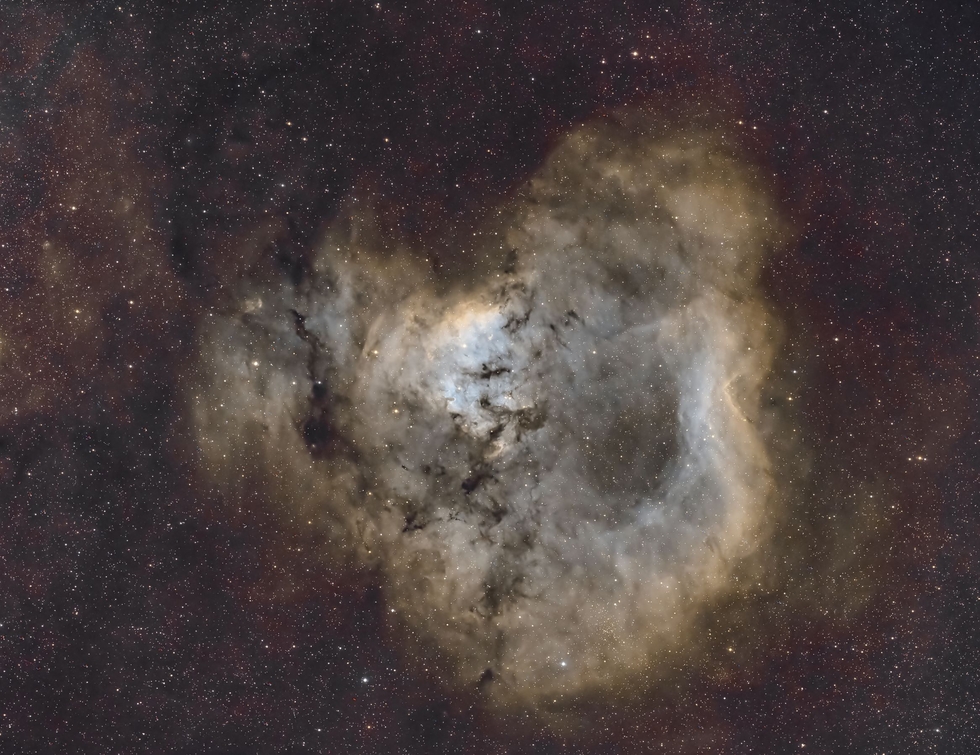CED 214
CED 214
Ced 214 (also known as Sh2-171) is a large emission nebula in the constellation Cepheus.
It is an extensive nebula region linked to the stellar association Cepheus OB4 and illuminated by the stars of the open cluster Berkeley 59; Vigorous star formation processes are active within it, generating low-mass stars. The area of sky where this nebula system is observed is located in the eastern part of the constellation Cepheus, about 8° north of the bright star Caph, in a stretch of the Milky Way strongly obscured by interstellar dust and unilluminated nebulae; in its direction we see HD 225216, an orange star of apparent magnitude 5.68, which, however, is not related to the nebula as it is in the foreground. Under a very dark sky and with the help of filters it is possible to see some vague details of the nebula, especially with instruments of large diameter and using very low magnifications due to the large size of the object; In photography, on the contrary, the system becomes very evident. The northern section of the complex is known as NGC 7822.
The declination of the association is strongly northerly, favoring its observation from the northern hemisphere, where it is circumpolar up to low latitudes; From the Southern Hemisphere, the observation period is therefore very limited and even the areas where it is visible are limited to the tropical belt. The best months for observing it in the evening sky are between July and December.
It is an extensive nebula region linked to the stellar association Cepheus OB4 and illuminated by the stars of the open cluster Berkeley 59; Vigorous star formation processes are active within it, generating low-mass stars. The area of sky where this nebula system is observed is located in the eastern part of the constellation Cepheus, about 8° north of the bright star Caph, in a stretch of the Milky Way strongly obscured by interstellar dust and unilluminated nebulae; in its direction we see HD 225216, an orange star of apparent magnitude 5.68, which, however, is not related to the nebula as it is in the foreground. Under a very dark sky and with the help of filters it is possible to see some vague details of the nebula, especially with instruments of large diameter and using very low magnifications due to the large size of the object; In photography, on the contrary, the system becomes very evident. The northern section of the complex is known as NGC 7822.
The declination of the association is strongly northerly, favoring its observation from the northern hemisphere, where it is circumpolar up to low latitudes; From the Southern Hemisphere, the observation period is therefore very limited and even the areas where it is visible are limited to the tropical belt. The best months for observing it in the evening sky are between July and December.
SPECIFICATIONS
Telescope
SPA-1-CCD
Camera
QHY 600M Pro
Location
IC ASTRONOMY OBSERVATORY, SPAIN
Date of observation
06-11-2022
Filters
SHO
Processing
Pixinsight and Photoshop
Credits
Credit Sauro Gaudenzi / Data Telescope Live


